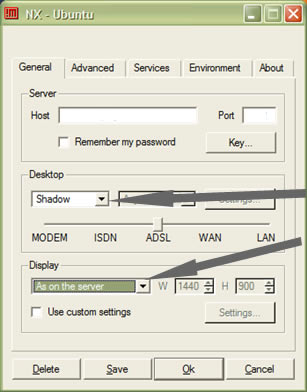I am very much into music (and I don’t own an IPOD!) and not quite your normal, radio delivered stuff either – I have a passion for World Music – here’s a bit of a list of some of my favourites – Nusrat Fateh Ali Khan, Fela Kuti, Orchestra Baobab, Fania All Stars, Tinariwen, Cesaria Evora, Hector Lavoe, Africando, Afro-Cuban All Stars and in the english speaking world I like Miles Davis, Tim Buckley and the Godfather of Soul – James Brown.
I have used plenty of different music players. Back in my windows days, I was stuck on Winamp for years when finally I started correctly tagging my mp3 collection and made the move to MediaMonkey. My folder/file layout has grown from it’s original incarnation to it’s current manageable format, which is pretty much as follows:
/genre/sub-genre/artist/album/artist-album-track-song
Obviously, some artists (like Tim Buckley) changed genres a couple of times through his career, so the top level “genre” is rather loose – 60’s and 70’s and no, I don’t have an 80’s & 90’s collection because that music was mostly lame though the good ones for that period – or better said “the ones that bring back memories” all get wacked in the “pop” folder, which is pretty much the “mainstream” folder.
Anyway.. on both KDE and Gnome, there’s quite a lot of choice when it comes to music players. I first started out with XMMS until I found out about Amarok. Amarok was a revolution for me as it was my introduction to Last.fm a very, very cool site that “scrobbles” each song you listen to from your collection and creates a “music profile” about you – that is, Amarok (and others) reports back to Last.fm each track you listen to and begins to build a personal profile about the music you listen to. You get your own “Top 100” charts, all time charts, favourite artists charts, weekly charts, top album charts – you can publish your charts to your website – show off your ultra-hip listening tastes
Anyway, it was a lot of work to get it to where it’s at today and I have about 7000 mp3’s – not huge but it mostly consists of music I listen to reasonably regularly. I have used many media players: Winamp, MediaMonkey, Itunes, Windows Media Player, Amarok, XMMS, Exaile! and Banshee but a few months ago, I began using Listen. Most of the players (at least the Linux ones) have the ability to communicate with Last.fm but Listen goes a step further than just reporting the music you listen to. It actually has a mode where you can load up 3 tracks or more and as it plays those tracks, it looks up Last.fm for similar songs and artists that belong in your music collection. Listen then adds those tracks to your playlist and repeats the process for each new song it plays so that you can have a continual flow of music the slowly deviates away from your first three tracks to others like it.
I’d love to see this expanded on because it has one slight flaw, which is that it naturally gravitates towards playing more and more popular music – so you could start with some really far out African stuff and then it finds someone who listens to some french african who listens to some french music, then selects some english music and next thing you know, you are listening to Pink Floyd – why? because it’s popular.
So, I would love to have some extra settings in there to help Listen select which “direction” I want to go – ie: play tracks that only include these tags – or play “least popular” instead of “most popular” – things like that.
Regardless, it’s a great music player – I don’t think I can remember it ever crashing (unlike Amarok). I believe it’s easily installed from Automatrix on Ubuntu but’s it’s written in Python, so shouldn’t be too hard to install on any other gnome based system.
I also have been getting into using Democracyplayer (recently renamed to Miro ) for videos and movies – you can get it here
Technorati Tags: listen, gnome, mp3, media player, ubuntu, amarok, winamp, miro, python
Powered by ScribeFire.
